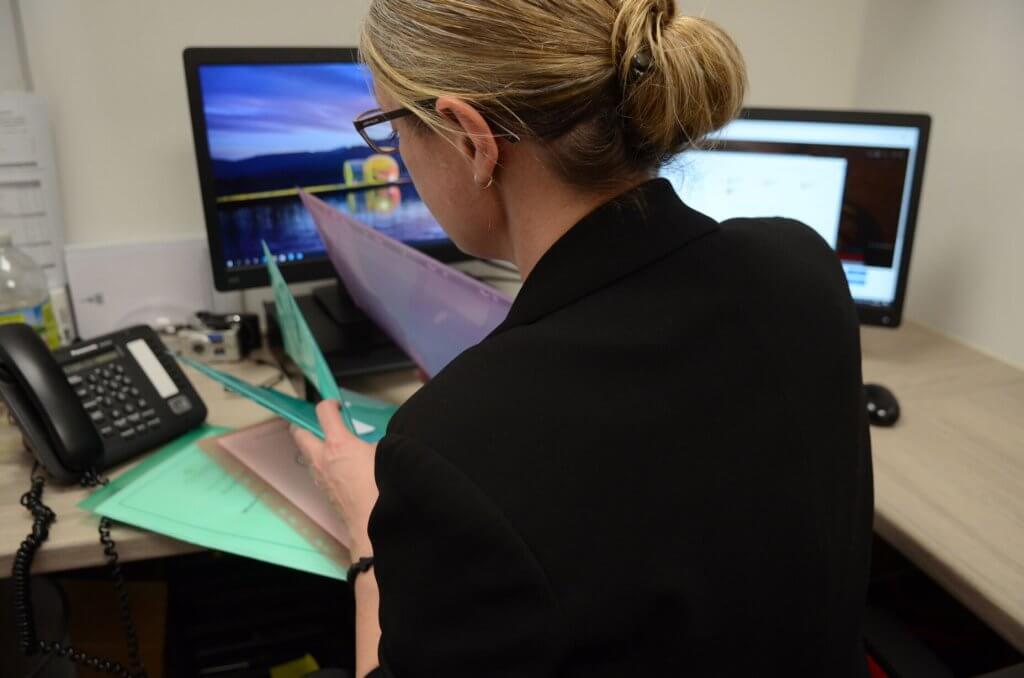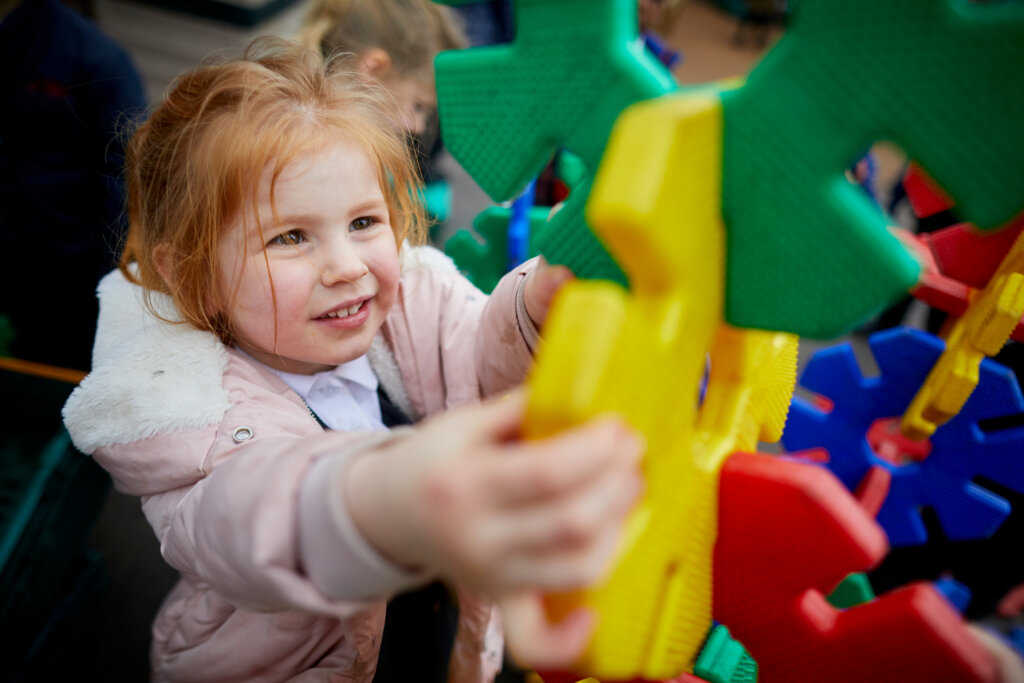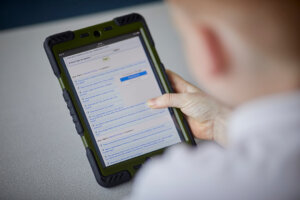A home corner is a staple in every early years classroom. In fact, it is usually one of the first areas you see as you enter the classroom – why is that? Because more often than not, it has the most children in there! Especially at this time of the year when children may be experiencing school life for the first time. They want to be somewhere in the classroom that feels safe, secure and like home!
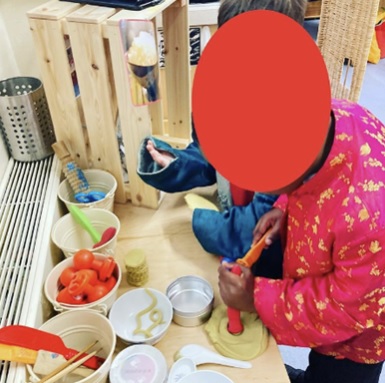
But how much attention do we really pay to this area of provision and the resources we put in there? How much of the characteristics of effective learning and interconnected areas of development do we recognise, reflect and resource in this area?
When we stop and think about the home corner, Communication and Language as well as Personal Social Emotional development will instantly spring to mind. These prime areas, as we know, are fundamental to the holistic development of a child and need to be carefully planned, considered and nurtured. However, as you reflect on this area further, are there any key areas of learning that are not developed in this space? The answer is no! We just need to open the door to these opportunities being explored in this wonderful area.
Let’s delve deeper and review this space!
How much space do they have?
This is really important to consider when evaluating the use of this area. Think about how popular the home corner is and ask, does the space on offer accommodate this? Gone are the days where we put a sign up at the area saying ‘only 5 children at a time,’ but we also need to be mindful about whether a space is practical if there are lots of little people in there, fighting for the teapot!
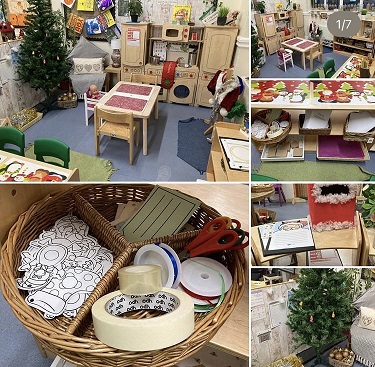
The simple solution is to expand the home corner, making it bigger to match the engagement levels of the children. This involves some creative thinking about where the space might be located in the classroom, identifying any neglected areas that could be better utilised or effectively adapted.
I remember watching a group of children in one nursery class who were in full role-play mode, being ‘mum’ and planning a party together. They had their party-planning meeting in the reading nook as this was a comfy space to relax, then headed to the writing area to record notes from their conversation as parents RSVP’d to their party invitations.
Whist this was incredibly resourceful of the children, and a pure joy to observe, what we learnt was that children were moving around the whole classroom to find spaces to meet their play needs. After some reflection, we decided to make this space bigger, fully equipped with comfy chairs, a desk with seating, and a range of writing materials and tools. So, my best advice is to stand back, observe and let the children inspire you, making adaptations to suit what their play reveals about the space and their needs.
What resources are in there? Do they support and extend learning?
It is really important to think about progression and how the home corner can evolve and adapt across the year. If you have both a nursery and reception class, you need to reflect on the needs of the children to ensure there are effective resources to support their ongoing development.
Real objects
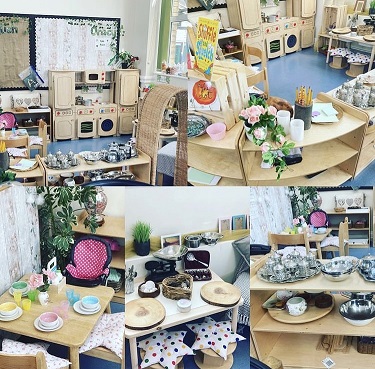
Charity shops, grandparents’ cupboards and car boot sales are the perfect places to pick up trinkets and intriguing objects in the home. Children love to explore these real-life objects, learning so much more than simply how to use them in role play. It encourages them to handle objects with delicacy and care; it opens discussions about how the objects work and what they do; and sparks their imagination and curiosity for the world around them.
Open-ended
Keep your resources as open-ended as possible and try not to set them up in a way that you would like to play! By all means, create an invitation-to-play, but encourage children to develop their independence by allowing them to guide and lead play. A great way to do this is by organising resources into baskets on shelves, so children then can help themselves to the resources they want and direct their own play.
Linked to interests
Remember to consider children’s interests. Reflecting on the example above about parties, think about how you could use this observation to adapt the area and develop children’s play further? For instance, you could provide balloons, wrapping paper and paper plates. Most importantly, how might you encourage children to make links with other areas of the environment to enhance their own learning? They could make their own bunting, party hats, invitations and party bags!
When we start to think about enhancements and the opportunities they can create, the benefits are huge. Instantly more motivated, children will take ownership of their learning and make seamlessly interconnected links with other key areas of development.
What is the adult’s role?
Your role is what the children want it to be! Remember, this is their safe space where they feel free to express themselves. You are most likely to play one of two roles: observer or whichever role the child has to assigned you!
When you are observing, try not to intervene. Listen and reflect. Then, make the necessary enhancements to meet the children’s emerging needs or interests. If you are playing in role, well get stuck in to that character! This is your chance to really model high-quality interactions and support children’s communication and social development (and be youthful again!)
I hope this blog has given you some food for thought about your home corner provision and inspired you to make it truly reflective of your children’s needs.
If you have found it useful to unpick an area and explore the learning that can take place, come along to our EYFS Network Meetings. Our first one is 8th November and the theme is Continuous Provision. We will take different areas of provision and explore the endless learning opportunities they can offer to our early learners. All of this and much, much more.
To find out more, click here and book your place!







